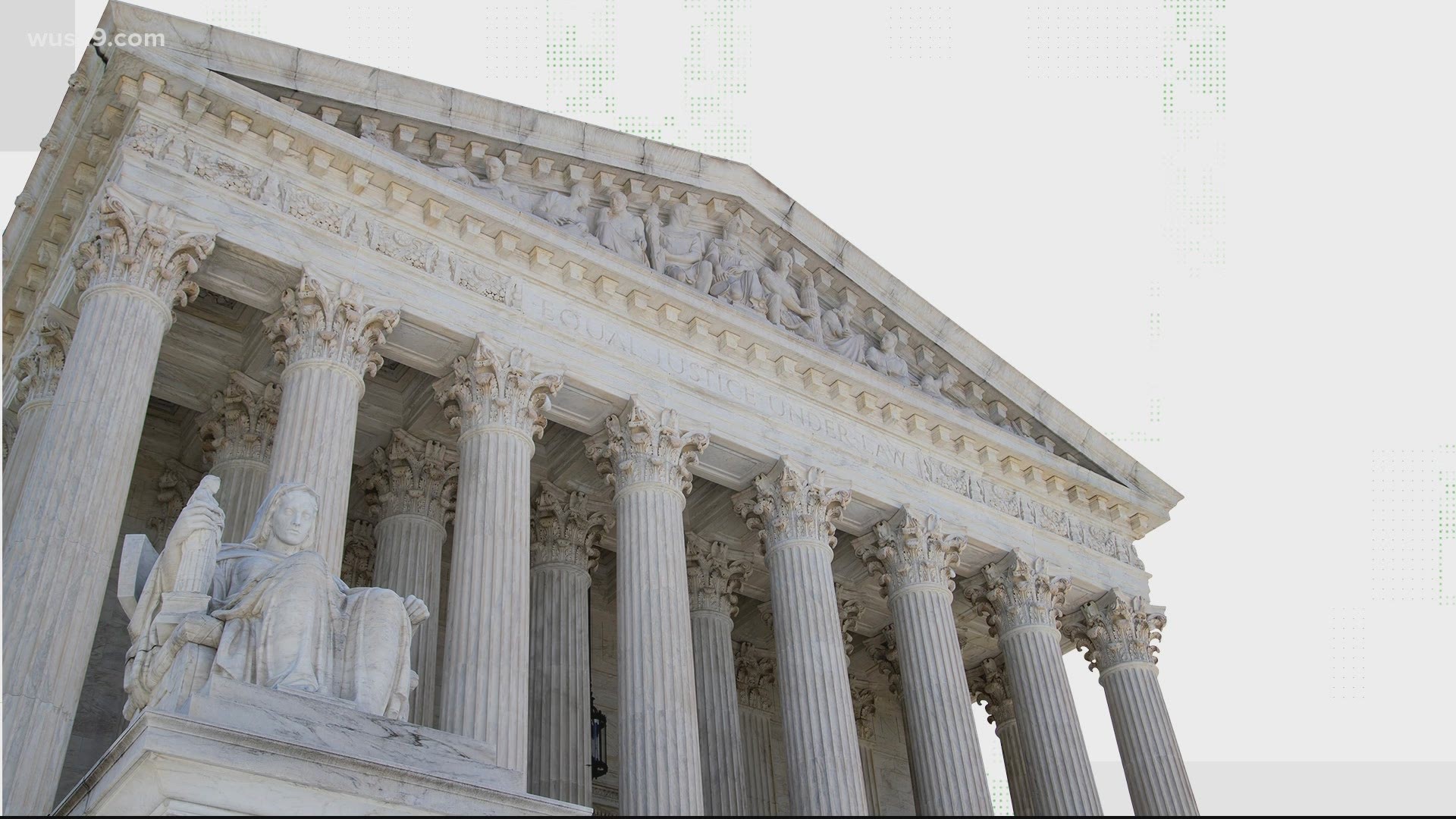WASHINGTON — On social media, many progressives have started to call for term limits for Supreme Court justices. This follows a generational shift, in which conservative-leaning justices have taken the majority of spots on the bench.
The Verify team spoke with various constitutional experts about whether term limits are allowed under the constitution.
THE QUESTION
Is it constitutional for Congress to put term limits on Supreme Court justices that would remove them from the bench?
THE SOURCES
- Article III, Section 1 of the U.S. Constitution
- Robert Peck, Founder and President of the Center For Constitutional Litigation
- Mark Graber, Law Professor at the University of Maryland Francis King Carey School of Law
- Ilya Shapiro, Vice President of The Cato Institute; Director of the Robert A. Levy Center for Constitutional Studies
- Louis Michael Seidman, Georgetown University law Professor; Upcoming author of "From Parchment to Dust: The Case for Constitutional Skepticism"
- Dr. Casey Burgat, Director of the Legislative Affairs Program at The George Washington University Graduate School of Political Management
- H.R. 5140, "Supreme Court Term Limits and Regular Appointments Act of 2021"
THE ANSWER
Article III, Section 1 of the U.S. Constitution reads that judges shall remain in their position so long as they follow "good behaviour." This has long indicated that judges, including Supreme Court justices, have lifetime tenure.
The general consensus among legal experts is that there would have to be a constitutional amendment in order to create term limits. Some political and legal scholars believe it can be done through other legislation that would move justices to other positions in the court, although this has not been tested.
WHAT WE KNOW
The Verify team spoke with five legal experts about whether term limits on Supreme Court justices would be constitutionally acceptable. The team also looked to Article III, Section 1 of the U.S. Constitution, which reads as follows:
"The judicial power of the United States, shall be vested in one Supreme Court, and in such inferior courts as the Congress may from time to time ordain and establish. The judges, both of the supreme and inferior courts, shall hold their offices during good behaviour, and shall, at stated times, receive for their services, a compensation, which shall not be diminished during their continuance in office."
Robert Peck, the Founder and President of the Center For Constitutional Litigation said that this "good behaviour" passage has been understood to mean that judges have lifetime tenure, making a term limit that removes judges not allowed.
"Everyone agrees that that would be unconstitutional," he said. "That limits the tenure of a Supreme Court judge that is set by the Constitution for good behavior, which has always been interpreted as lifetime tenure."
Mark Graber, a law professor at the University of Maryland agreed.
"You can no more fire a judge than you can fire a tenured professor," he said. "Assuming good behavior, I can't be fired. (Similarly) Clarence Thomas can't be fired."
According to Graber the most plausible way that Congress could initiate term limits is through a constitutional amendment, something which requires two-thirds of Congress and three-fourths of the states.
"Once we're in constitutional amendment land," he said. "All bets are off."
Could H.R.5140 give Congress the power to set term limits?
Some legal experts argue that Supreme Court justices can be practically removed from the highest court of the land, so long as they are assigned another position in the federal courts.
A bill proposed in Congress, H.R. 5140, would require that Supreme Court justices become "Senior Justices" after 18 years of service. Under this longshot bill, presidents would appoint a new justice every two years.
"It basically says that in order to allow presidents to have two appointments during their first four years," said Peck. "What they're going to do is make the more senior judges be called "senior judges," and essentially put them out to pasture. They can continue to serve as federal judges on lower courts and they can sub in."
Georgetown Law professor Louis Michael Seidman said that this type of action might be acceptable, although it's not been tested.
"The Constitution is silent about what justices actually do," he said. "There is some lower court precedent for judges (who also have life tenure) being barred from sitting. There's no precedent with regards to Supreme Court justices but it is at least possible that Congress, using its 'necessary and proper' authority under Article I, could order that justices after 18 years would sit only on lower court cases."
Casey Burgat, a law professor at The George Washington University added the following:
"There are a few different ways to implement (term limits)," he said. "From unenforceable pledges to retire from any future SCOTUS nominee to term limits established via statute, to adoption of a constitutional amendment. Current Chief Justice Roberts argued their constitutionality while working in the Reagan White House Counsel's office."
Not all legal experts are so sure. Ilya Shapiro from The Cato Institute said that he believes only a constitutional amendment could open the door to Supreme Court justice term limits.
"Unless they're impeached," he said. "Basically they have to be there. You can't change their office, you can't get rid of them. You can't call them senior judges or justices. They have to have the same office."
With a narrow Democratic majority in both houses, this type of bill remains an uphill battle. Peck said legal scholars too would be split when it comes to H.R. 5140.
"You would have at least half of them saying that this is a pretty creative and constitutionally valid approach," he said. "And you'd have another half saying, no, this really violates the spirit of what the constitution was doing, by insulating the justices from political maneuvers."

